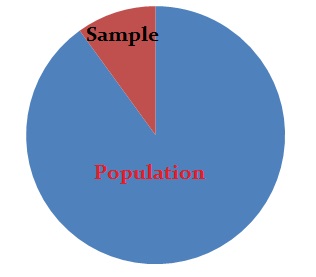Statistics Definitions > Purposive Sampling / Deliberate Sampling

A purposive sample is where a researcher selects a sample based on their knowledge about the study and population. The participants are chosen based on the purpose of the sample, hence the name.
Watch the video for an overview of purposive sampling:
As participants are selected according to the needs of the study (hence the alternate name, deliberate sampling); applicants who do not meet the profile are rejected. For example, you may be conducting a study on why high school students choose community college over university. You might canvas high school students and your first question would be “Are you planning to attend college?” People who answer “No,” would be excluded from the study.
Types of Purposive Sampling
Several subtypes of purposive sampling exist:
- Critical Case Sampling: collecting cases that are likely to give you the most information about the phenomenon you are studying.
- Expert Sampling: Sampling to include only those with expertise in a certain area.
- Extreme Case Sampling: this technique focuses on participants with unique or special characteristics.
- Homogeneous Sampling: collecting a very specific set of participants. For example, age 20-24, college educated, male.
- Maximum Variation Sampling: collecting a wide range of participants with different viewpoints to study a certain phenomenon. Can uncover common themes.
- Total Population Sampling: the entire population, who share common characteristics, is studied.
- Typical Case Sampling: allows the researcher to develop a profile about what is normal or average for a particular phenomenon.
Advantages of Purposive Sampling
Each subtype of purposive sampling has their own advantages and disadvantages. In general, one major advantage of this type of sampling is that it’s easier to make generalizations about your sample compared to, say, a random sample where not all participants have the characteristic you are studying.
Disadvantages of Purposive Sampling
Purposive sampling is sometimes called a judgmental sample, which is a bit of a misnomer; there’s no intended bias in purposive sampling. However, due to a lack of random sampling, purposive sampling is sometimes open to selection bias and error. Even if you tried to eliminate selection bias to the best of your ability, it can be difficult to defend your choices for participants. Readers of your study may doubt if the purposive sampling resulted in a representative sample.
References
Agresti A. (1990) Categorical Data Analysis. John Wiley and Sons, New York.
Dodge, Y. (2008). The Concise Encyclopedia of Statistics. Springer.
Klein, G. (2013). The Cartoon Introduction to Statistics. Hill & Wamg.
Levine, D. (2014). Even You Can Learn Statistics and Analytics: An Easy to Understand Guide to Statistics and Analytics 3rd Edition. Pearson FT Press